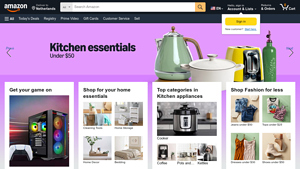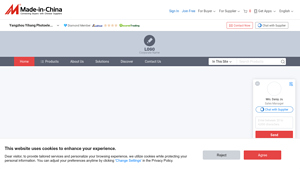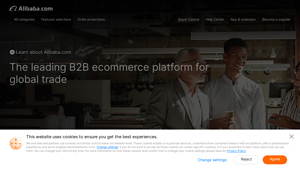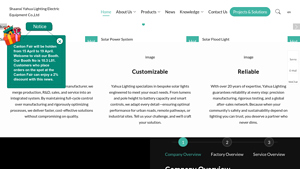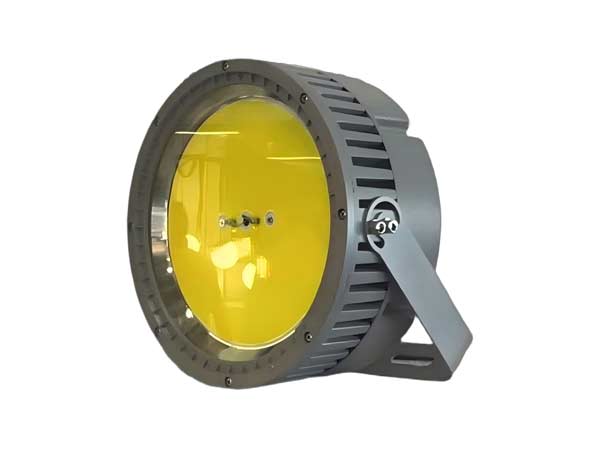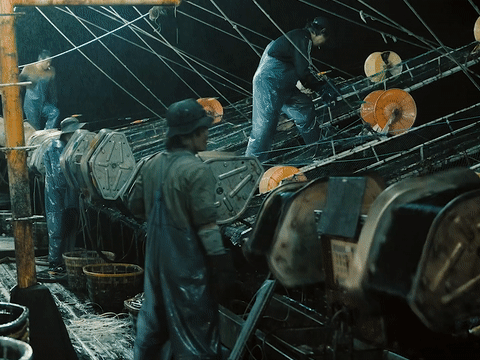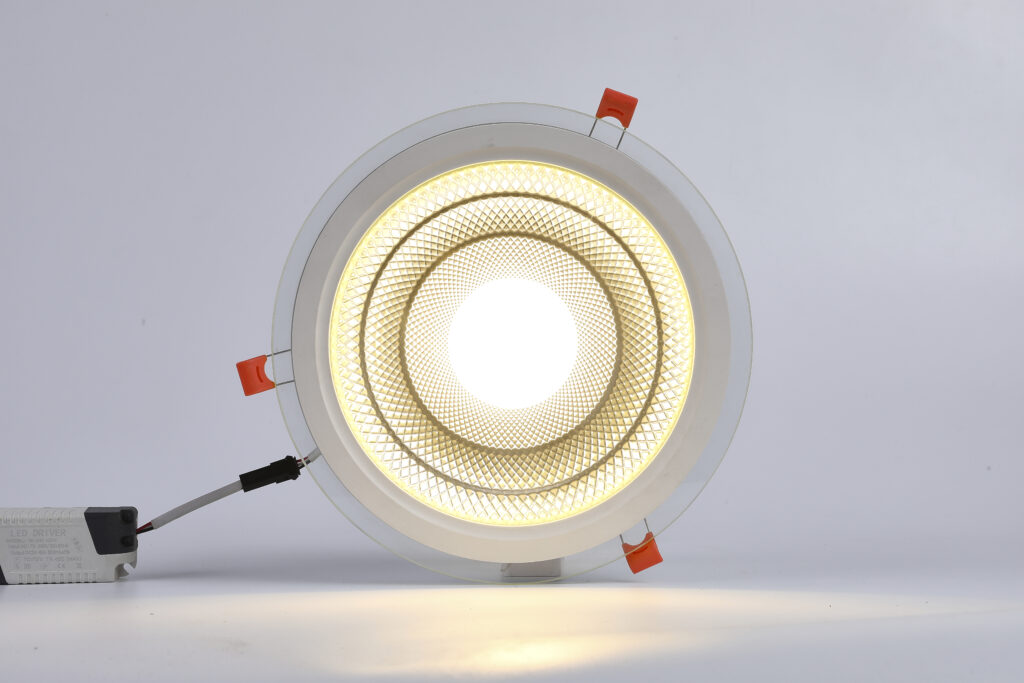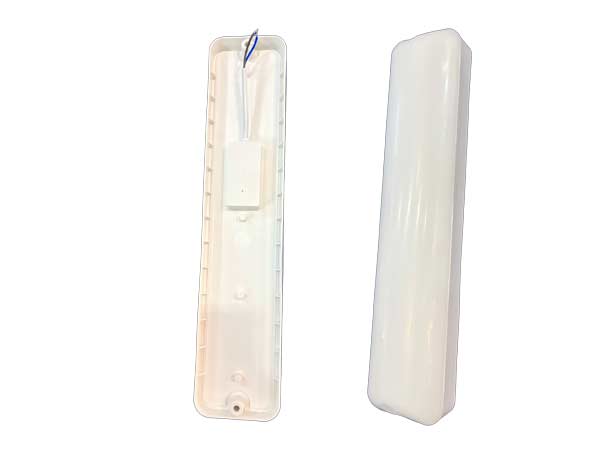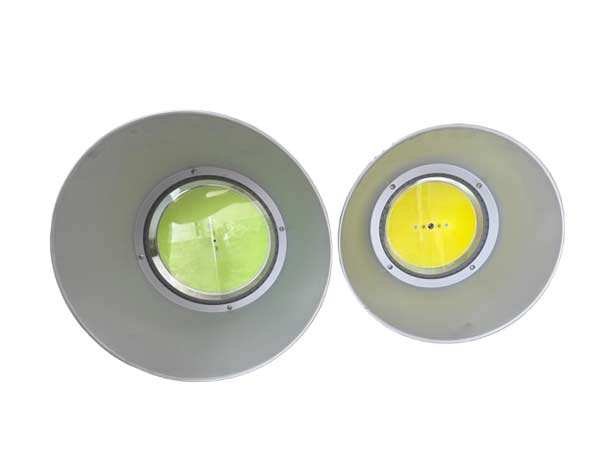Article Navigation
- Introduction: Navigating the Global Market for Round Surface-mounted Ultra-thin LED panel lights
- Understanding Round Surface-mounted Ultra-thin LED panel lights Types and Variations
- Key Industrial Applications of Round Surface-mounted Ultra-thin LED panel lights
- Strategic Material Selection Guide for Round Surface-mounted Ultra-thin LED panel lights
- In-depth Look: Manufacturing Processes and Quality Assurance for Round Surface-mounted Ultra-thin LED panel lights
- Comprehensive Cost and Pricing Analysis for Round Surface-mounted Ultra-thin LED panel lights Sourcing
- Spotlight on Potential Round Surface-mounted Ultra-thin LED panel lights Manufacturers and Suppliers
- Essential Technical Properties and Trade Terminology for Round Surface-mounted Ultra-thin LED panel lights
- Navigating Market Dynamics, Sourcing Trends, and Sustainability in the Round Surface-mounted Ultra-thin LED panel lights Sector
- Frequently Asked Questions (FAQs) for B2B Buyers of Round Surface-mounted Ultra-thin LED panel lights
- Important Disclaimer & Terms of Use
- Strategic Sourcing Conclusion and Outlook for Round Surface-mounted Ultra-thin LED panel lights
Introduction: Navigating the Global Market for Round Surface-mounted Ultra-thin LED panel lights
In today’s rapidly evolving global marketplace, the demand for energy-efficient lighting solutions is more pronounced than ever. Round surface-mounted ultra-thin LED panel lights have emerged as a popular choice among businesses looking to enhance their environments while minimizing energy consumption. These sleek, modern fixtures not only offer superior illumination but also contribute to sustainable practices—an aspect increasingly valued by consumers and stakeholders alike.
This comprehensive guide aims to equip international B2B buyers from Africa, South America, the Middle East, and Europe with actionable insights into the sourcing and procurement of round surface-mounted ultra-thin LED panel lights. It will delve into key market trends, technological advancements, and critical factors influencing purchasing decisions, such as quality standards, supplier reliability, and cost-effectiveness.
By navigating this guide, buyers will gain a nuanced understanding of the competitive landscape and the various options available to meet their specific needs. Whether you are looking to retrofit existing spaces or embarking on new construction projects, this resource is designed to empower your sourcing strategy, ensuring that you make informed decisions that align with your operational goals and sustainability commitments. With the right knowledge, you can confidently select products that not only illuminate but also elevate your business’s value proposition in an increasingly competitive environment.
Understanding Round Surface-mounted Ultra-thin LED panel lights Types and Variations
| Type Name | Key Features | Primary B2B Applications | Pros | Cons |
|---|---|---|---|---|
| Standard Round LED Panel | Slim profile, various color temperatures, energy-efficient | Offices, retail spaces, hospitality | Cost-effective, versatile lighting | Limited aesthetic options |
| Dimmable Round LED Panel | Adjustable brightness, remote control options | Conference rooms, restaurants | Enhanced ambiance, energy savings | Higher initial cost |
| Smart Round LED Panel | Wi-Fi/Bluetooth enabled, app-controlled | Smart buildings, modern offices | Integrates with smart systems, customizable | Potential connectivity issues |
| Emergency Round LED Panel | Battery backup, high-visibility indicators | Warehouses, emergency exits | Safety compliance, reliable during outages | Heavier due to battery components |
| Decorative Round LED Panel | Unique designs, multiple color options | Showrooms, luxury retail, art galleries | Enhances aesthetic appeal, attracts customers | Higher maintenance and replacement costs |
Standard Round LED Panel
Standard round LED panels are characterized by their slim profile and energy efficiency, making them an ideal choice for a variety of commercial environments. Their versatility allows them to be used in offices, retail spaces, and hospitality settings. While they are cost-effective and provide versatile lighting options, they may lack unique aesthetic qualities compared to more specialized designs.
Dimmable Round LED Panel
Dimmable round LED panels offer adjustable brightness levels, often featuring remote control options. This flexibility makes them particularly suitable for environments like conference rooms and restaurants, where mood and ambiance are essential. The ability to save energy by dimming lights contributes to cost savings, although the initial investment may be higher than standard panels.
Smart Round LED Panel
Smart round LED panels come equipped with Wi-Fi or Bluetooth connectivity, allowing for app-based control. These panels are increasingly popular in smart buildings and modern office settings, where integration with other smart systems is desired. Their customizability and convenience are significant advantages, but potential connectivity issues may arise, affecting functionality.
Emergency Round LED Panel
Emergency round LED panels are designed with battery backup and high-visibility indicators, ensuring they remain operational during power outages. They are crucial in warehouses and emergency exits, providing safety compliance and reliable lighting when needed most. However, their heavier construction due to battery components can be a drawback in some installations.
Decorative Round LED Panel
Decorative round LED panels stand out with unique designs and a variety of color options, making them perfect for showrooms, luxury retail spaces, and art galleries. They enhance aesthetic appeal and can attract customers, which is vital for businesses in competitive markets. However, their higher maintenance and replacement costs may pose challenges for some B2B buyers.
Key Industrial Applications of Round Surface-mounted Ultra-thin LED panel lights
Round surface-mounted ultra-thin LED panel lights are increasingly becoming essential across various industries due to their energy efficiency, sleek design, and versatility. Below are several key industries and specific B2B applications where these lighting solutions can add significant value.
| Industry | Specific Application | Business Value | Sourcing Considerations |
|---|---|---|---|
| Commercial Real Estate | Office Spaces | Enhances productivity and employee satisfaction through improved lighting quality. | Ensure compliance with local energy regulations and standards. |
| Healthcare | Hospitals and Clinics | Provides bright, shadow-free lighting essential for surgeries and patient care. | Focus on durability and ease of cleaning to maintain hygiene. |
| Retail | Showrooms and Retail Stores | Attracts customers by highlighting products effectively, boosting sales. | Consider color rendering index (CRI) for accurate color representation. |
| Education | Classrooms and Lecture Halls | Improves focus and reduces eye strain for students and educators alike. | Evaluate energy consumption and long-term maintenance costs. |
| Hospitality | Hotels and Restaurants | Creates an inviting atmosphere that enhances guest experience and ambiance. | Look for customizable options to fit various interior designs. |
Industry Applications Explained
Commercial Real Estate
In office spaces, round surface-mounted ultra-thin LED panel lights provide a modern aesthetic while ensuring optimal lighting conditions that enhance productivity. The design allows for seamless integration into ceilings, creating an uncluttered look. By investing in these energy-efficient lights, businesses can also reduce operational costs through lower energy consumption, making it an appealing option for property managers and tenants alike.
Healthcare
In healthcare settings, such as hospitals and clinics, these LED lights are crucial for providing bright, even illumination in critical areas like operating rooms and patient examination rooms. Their ability to minimize shadows is vital for procedures requiring precision. Furthermore, the long lifespan and low maintenance requirements contribute to reduced operational costs, which is a significant consideration in budget-sensitive healthcare environments.
Retail
Retail environments benefit significantly from ultra-thin LED panel lights, as they enhance the visual appeal of merchandise and improve the shopping experience. Proper lighting can make products more attractive, leading to increased sales. Retailers must consider the color rendering capabilities of the lights to ensure that products are displayed in their true colors, which helps in reducing returns and increasing customer satisfaction.
Education
In educational institutions, round surface-mounted ultra-thin LED panel lights can transform classrooms and lecture halls by providing bright, focused lighting that helps reduce eye strain for students and educators. This is particularly important in settings where extended periods of reading and writing occur. Additionally, the energy efficiency of these lights aligns with many educational institutions’ sustainability goals, contributing to long-term cost savings.
Hospitality
The hospitality industry leverages ultra-thin LED panel lights to create inviting and aesthetically pleasing environments in hotels and restaurants. The sleek design complements modern decor while providing adjustable lighting options for different settings, such as dining areas or lounges. By sourcing customizable lighting solutions, hospitality businesses can enhance their brand image and improve guest experiences, leading to increased customer loyalty and repeat visits.
Strategic Material Selection Guide for Round Surface-mounted Ultra-thin LED panel lights
When selecting materials for round surface-mounted ultra-thin LED panel lights, international B2B buyers must consider several factors, including durability, thermal management, cost-effectiveness, and aesthetic appeal. Below is an analysis of four common materials used in the manufacturing of these lighting fixtures.
1. Aluminum
Properties:
Aluminum is a lightweight and corrosion-resistant metal with excellent thermal conductivity. This property makes it particularly suitable for LED panel lights, as it helps dissipate heat generated by the LEDs effectively.
Pros:
- Thermal Management: Efficient heat dissipation extends the lifespan of the LEDs.
- Lightweight: Easy to handle during installation and reduces structural load.
- Corrosion Resistance: Suitable for various environments, including humid or coastal areas.
Cons:
- Cost: Higher initial material cost compared to some plastics.
- Scratching and Dents: Prone to surface damage if not properly treated or coated.
Application Impact:
Aluminum is ideal for environments where heat management is critical, such as in commercial spaces or areas with prolonged lighting use.
2. Polycarbonate
Properties:
Polycarbonate is a durable plastic known for its high impact resistance and clarity. It can be molded into various shapes, making it a popular choice for light diffusers.
Pros:
- Impact Resistance: Highly durable and less likely to shatter compared to glass.
- Cost-Effective: Generally cheaper than metals like aluminum.
- Lightweight: Reduces shipping and installation costs.
Cons:
- Heat Resistance: Lower thermal resistance compared to metals; may warp or discolor over time when exposed to high temperatures.
- UV Degradation: Can become yellowed if not treated for UV protection.
Application Impact:
Polycarbonate is suitable for indoor applications where high impact resistance is needed, such as in schools and hospitals. However, it may not be the best choice for high-temperature environments.
3. Steel
Properties:
Steel is a robust and heavy metal that offers excellent structural integrity. It can be treated for corrosion resistance and is often used in commercial-grade fixtures.
Pros:
- Strength: Provides durability and can withstand physical impacts.
- Versatile Finishing: Can be powder-coated for aesthetic appeal and enhanced corrosion resistance.
Cons:
- Weight: Heavier than aluminum and polycarbonate, which can complicate installation.
- Thermal Conductivity: Less effective at dissipating heat compared to aluminum.
Application Impact:
Steel is well-suited for industrial applications where robustness is essential, but its weight may limit its use in residential or lightweight installations.
4. Glass
Properties:
Glass is a traditional material known for its aesthetic qualities and excellent light transmission. It can be treated for strength and thermal resistance.
Pros:
- Aesthetic Appeal: Provides a high-end look and can enhance the design of the space.
- High Clarity: Excellent light transmission ensures optimal performance of the LED.
Cons:
- Fragility: Prone to breaking or shattering, which poses safety risks.
- Weight: Heavier than other materials, complicating installation.
Application Impact:
Glass is ideal for decorative fixtures in high-end residential and commercial applications where aesthetics are a priority, but its fragility limits its use in high-traffic areas.
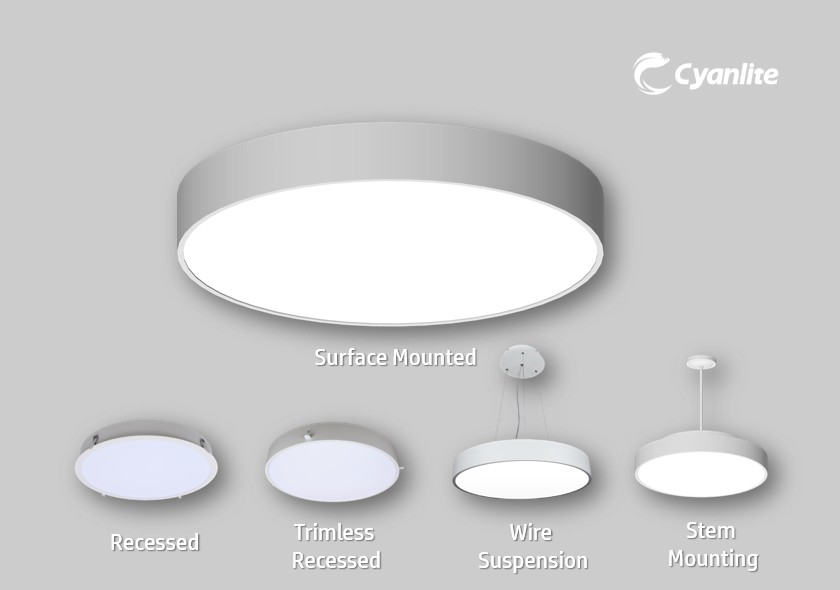
Illustrative Image (Source: Google Search)
Summary Table
| Material | Use Case | Advantage | Disadvantage | Relative Cost |
|---|---|---|---|---|
| Aluminum | Commercial spaces, prolonged use | Excellent thermal management | Higher initial cost | Medium |
| Polycarbonate | Indoor applications, schools, hospitals | Impact resistant, cost-effective | Lower heat resistance | Low |
| Steel | Industrial applications | Strong and durable | Heavy, less thermal efficiency | Medium |
| Glass | High-end residential/commercial design | Aesthetic appeal, high light clarity | Fragile, heavy | High |
By understanding the properties, advantages, and disadvantages of each material, B2B buyers can make informed decisions that align with their specific application needs and budget constraints. Whether prioritizing durability, cost-effectiveness, or aesthetic appeal, selecting the right material is crucial for the success of round surface-mounted ultra-thin LED panel lights.
In-depth Look: Manufacturing Processes and Quality Assurance for Round Surface-mounted Ultra-thin LED panel lights
The manufacturing process for Round Surface-mounted Ultra-thin LED panel lights involves several intricate stages, each crucial for ensuring the final product meets quality and performance standards. This section provides an in-depth look into these processes along with the quality assurance measures that B2B buyers should consider when sourcing these products internationally.
Manufacturing Process
1. Design and Prototyping
The journey begins with the design phase, where engineers create detailed schematics and specifications for the LED panel lights. Computer-Aided Design (CAD) software is commonly used to develop prototypes. This phase allows manufacturers to assess the feasibility of the design and make necessary adjustments before moving to mass production.
2. Material Selection
Selecting high-quality materials is essential for durability and performance. Typical materials include:
- LED chips: Choose reputable suppliers for high-efficiency and long-lifespan LEDs.
- Housing materials: Aluminum is often preferred due to its lightweight and heat dissipation properties.
- Optics: Polycarbonate or acrylic is used for light diffusers to ensure even light distribution and minimize glare.
3. Component Assembly
The assembly process typically follows these steps:
- Circuit Board Assembly: Surface Mount Technology (SMT) is used to place LED chips onto printed circuit boards (PCBs). This automated process ensures precision and efficiency.
- Housing Assembly: The housing is assembled around the PCB. This includes attaching heat sinks and diffusers, which are critical for maintaining optimal operating temperatures and light quality.
4. Soldering and Bonding
Soldering is a critical step where electronic components are electrically connected to the PCB. Various techniques, such as reflow soldering or wave soldering, may be employed depending on the complexity of the assembly.
5. Final Assembly and Testing
After the initial assembly, the panels undergo final assembly, which involves integrating additional features such as drivers and dimming controls. At this stage, the panels are also visually inspected for defects.
Quality Control (QC)
Effective quality control measures are vital in ensuring that Round Surface-mounted Ultra-thin LED panel lights meet international standards. B2B buyers should be aware of the following quality assurance practices:
1. International Standards
Manufacturers should adhere to relevant international standards, such as:
- ISO 9001: This standard focuses on quality management systems and ensures a consistent quality of products and services.
- IEC 62031: This standard specifically addresses the safety and performance of LED modules.
2. Quality Control Checkpoints
Quality control is integrated into various stages of the manufacturing process. Key checkpoints include:
-
Incoming Quality Control (IQC): This initial checkpoint verifies the quality of raw materials and components received from suppliers. It ensures that only materials meeting specified standards proceed to production.
-
In-Process Quality Control (IPQC): During manufacturing, continuous monitoring is conducted to identify and rectify defects early in the process. This includes checking soldering quality, alignment of components, and adherence to assembly protocols.
-
Final Quality Control (FQC): Before shipment, finished products undergo rigorous testing and inspection. This includes electrical testing, thermal performance evaluations, and visual inspections to ensure compliance with specifications.
3. Common Testing Methods
Testing methods play a crucial role in quality assurance. Common practices include:
- Photometric Testing: Measures luminous flux, intensity distribution, and color temperature to ensure the light output meets performance standards.
- Electrical Testing: Assesses power consumption, voltage, and current to ensure safe and efficient operation.
- Thermal Testing: Evaluates heat dissipation and operating temperatures to prevent overheating and ensure longevity.
- Durability Testing: Simulates environmental conditions such as humidity, temperature fluctuations, and vibration to assess product resilience.
Verifying Quality Control
B2B buyers can take several steps to verify the quality control processes of manufacturers:
-
Request Certifications: Always ask for copies of ISO certifications and compliance with other relevant standards.
-
Conduct Factory Audits: If possible, arrange a visit to the manufacturing facility. This allows buyers to observe the production process and quality control measures firsthand.
-
Review Testing Reports: Request detailed reports on photometric, electrical, and thermal testing. These documents provide insight into the product’s performance and reliability.

Illustrative Image (Source: Google Search)
-
Seek References and Reviews: Engage with other buyers who have sourced from the manufacturer. Their experiences can provide valuable insights into product quality and the reliability of the manufacturer’s QC processes.
-
Establish a Trial Order: Before committing to a large purchase, consider placing a smaller trial order to evaluate the product quality and performance in real-world applications.
Conclusion
Understanding the manufacturing processes and quality assurance measures for Round Surface-mounted Ultra-thin LED panel lights is crucial for B2B buyers. By being informed about the manufacturing stages, quality control checkpoints, and testing methods, buyers can make more informed decisions and ensure they source high-quality products that meet their needs. Establishing strong relationships with reliable manufacturers and maintaining open lines of communication can further enhance the procurement process, leading to successful outcomes in the international marketplace.
Comprehensive Cost and Pricing Analysis for Round Surface-mounted Ultra-thin LED panel lights Sourcing
When sourcing Round Surface-mounted Ultra-thin LED panel lights, B2B buyers must navigate a multifaceted cost structure and be aware of various pricing influences to optimize their procurement strategy. Understanding these components can significantly impact the overall investment and profitability of the project.
Cost Structure Analysis
-
Materials:
The primary cost driver in manufacturing ultra-thin LED panel lights is the raw materials, including LED chips, circuit boards, housing, and diffusers. Prices for these materials fluctuate based on global supply chain dynamics, availability, and market demand. For instance, the cost of semiconductor components can be volatile, influenced by trends in the electronics market. Buyers should seek suppliers who offer transparency in their material sourcing and can provide alternatives that maintain quality while reducing costs. -
Labor:
Labor costs vary significantly by region. In countries with lower labor costs, such as those in parts of Africa and South America, manufacturers may offer competitive pricing. However, factors such as skilled labor availability and labor regulations can affect production efficiency. It’s advisable for buyers to assess the labor practices of potential suppliers, as ethical sourcing and fair labor practices are increasingly important in today’s market. -
Overhead:
This encompasses all indirect costs associated with production, including utilities, rent, and administrative expenses. Overhead can vary widely depending on the manufacturer’s operational scale and efficiency. Larger manufacturers may benefit from economies of scale, potentially offering lower prices. Buyers should inquire about the supplier’s operational efficiency and how it translates into pricing. -
Quality Control (QC):
A robust QC process is crucial for ensuring product reliability and compliance with safety standards. The costs associated with QC can vary based on the complexity of the testing procedures and the certifications required (e.g., CE, RoHS). Buyers should consider suppliers who integrate quality assurance into their production processes, as this can reduce long-term costs related to product failures and returns.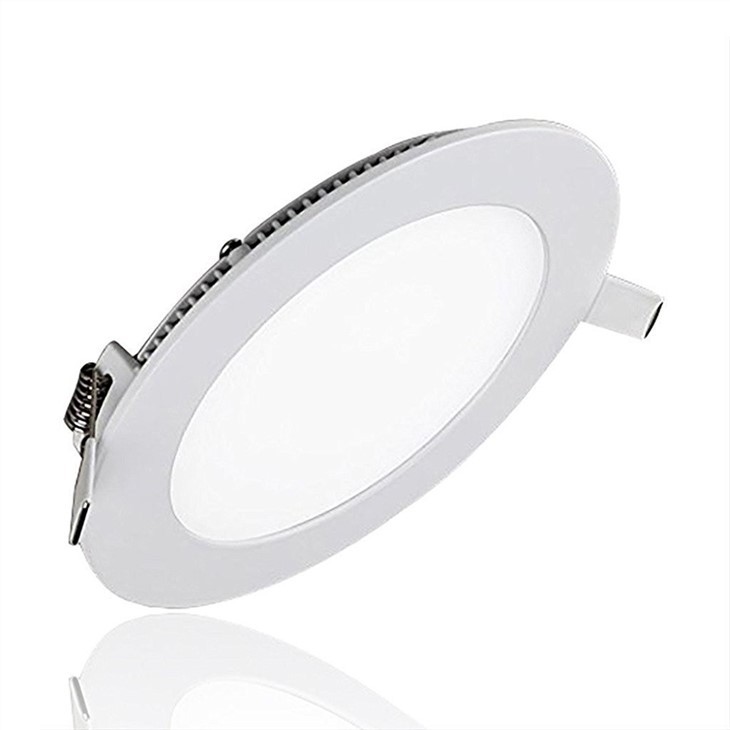
Illustrative Image (Source: Google Search)
-
Logistics:
Logistics costs include shipping, handling, and warehousing. These costs can be significant, especially for international shipments. Factors such as the shipping method (air vs. sea), distance, and customs duties play a critical role in determining the total logistics cost. Buyers should evaluate suppliers based on their ability to provide competitive shipping rates and efficient delivery timelines.
Pricing Influencers
Several factors can influence the pricing of Round Surface-mounted Ultra-thin LED panel lights:
-
Volume: Bulk purchases often lead to discounts, as manufacturers are more willing to negotiate prices for larger orders. Buyers should consider consolidating their orders to benefit from economies of scale.
-
Specifications and Quality: Custom specifications, such as dimming capabilities, color temperature, and energy efficiency ratings, can significantly affect pricing. Higher-quality components typically command higher prices. Buyers should assess their needs carefully to avoid over-specifying and incurring unnecessary costs.
Buyer Tips
-
Negotiation:
Effective negotiation can yield significant savings. Buyers should prepare by researching market prices, understanding supplier cost structures, and being clear about their budget and specifications. -
Total Cost of Ownership (TCO):
Rather than focusing solely on the initial purchase price, buyers should consider the TCO, which includes installation, maintenance, and energy costs over the product’s lifespan. Selecting energy-efficient models can lead to substantial savings in operational costs. -
Supplier Relationships:
Building strong relationships with suppliers can lead to better pricing and service. Long-term partnerships often result in preferential treatment during negotiations and access to exclusive deals.
By understanding the comprehensive cost structure and pricing dynamics associated with Round Surface-mounted Ultra-thin LED panel lights, B2B buyers can make informed decisions that enhance their purchasing strategy and align with their business objectives.
Spotlight on Potential Round Surface-mounted Ultra-thin LED panel lights Manufacturers and Suppliers
This section looks at several manufacturers active in the ‘Round Surface-mounted Ultra-thin LED panel lights’ market. This is a representative sample for illustrative purposes; B2B buyers must conduct extensive due diligence.
Amazon – In stock 30-day returnsHigh-efficiency LED panel
Goodlite specializes in innovative lighting solutions, particularly with their Ultra-Slim 6″x4″ Surface Mount LED Panel Lights. Designed for versatility and efficiency, these ultra-thin round surface-mounted LED lights offer a range of wattage options to suit various commercial and residential applications. Their focus on energy-efficient lighting solutions positions them as a reliable choice for international B2B buyers seeking modern, space-saving illumination technologies.
- …
2f83ed327329328f – In stock Rating 5.0
Ultra-Thin Small LED Ceiling Light specializes in round surface-mounted ultra-thin LED panel lights, offering a modern and energy-efficient lighting solution suitable for various applications. With a focus on sleek design and high performance, the company likely emphasizes durability and versatility, catering to commercial and residential markets. Their product range may include customizable options to meet diverse customer needs in illumination and aesthetics.
- …
Alibaba – Out of stock Rating 5.0
Ultra Thin Surface Mounted 12w Round Flat 12v DC LED Light Panel specializes in innovative lighting solutions, offering a range of round surface-mounted ultra-thin LED panel lights. Their products are designed for energy efficiency, sleek aesthetics, and versatility, making them ideal for various commercial and residential applications. The company likely emphasizes quality, durability, and customer satisfaction, positioning itself as a reliable supplier in the LED lighting market.
- …
Yahualighting – Within those world well-known LED Panel
Ultra Thin Surface Mounted 12w Round Flat 12v DC LED Light Panel specializes in the production of round, surface-mounted ultra-thin LED panel lights. Their product range emphasizes energy efficiency, sleek design, and versatility, making them ideal for various commercial and residential applications. With a commitment to quality and innovation, the company aims to meet the diverse lighting needs of international B2B buyers seeking modern solutions.
- …
Essential Technical Properties and Trade Terminology for Round Surface-mounted Ultra-thin LED panel lights
When considering the procurement of Round Surface-mounted Ultra-thin LED panel lights, understanding key technical properties and trade terminology is crucial for international B2B buyers. Below is a comprehensive overview of essential specifications and common jargon that will aid in informed decision-making.
Key Technical Properties
-
Luminous Flux (Lumens)
Luminous flux measures the total amount of visible light emitted by a source per unit of time. It is quantified in lumens (lm). For LED panel lights, higher lumens indicate brighter light output, which is vital for applications in commercial spaces, offices, and retail environments. Buyers should assess the lumen output to match their illumination needs effectively. -
Color Temperature (Kelvin)
Color temperature describes the appearance of the light emitted by the LED panel, measured in Kelvin (K). Common values for LED panels range from warm white (2700K) to cool white (6500K). The choice of color temperature affects ambiance and functionality; for instance, warmer tones create a cozy atmosphere, while cooler tones are often preferred for workspaces. -
Power Consumption (Watts)
Power consumption indicates the electrical power required to operate the LED panel lights, measured in watts (W). An essential consideration for B2B buyers, lower wattage typically correlates with energy efficiency, leading to reduced operational costs. Buyers should compare wattage against luminous output to evaluate efficiency. -
Beam Angle
The beam angle defines the spread of light emitted from the panel, measured in degrees. A wider beam angle (e.g., 120 degrees) is suitable for general lighting, while a narrower beam angle (e.g., 60 degrees) is ideal for accent lighting. Selecting the appropriate beam angle is critical to achieving desired lighting effects in various environments. -
Lifespan (Hours)
Lifespan indicates the operational longevity of the LED panel lights, typically rated in hours. High-quality LEDs can last up to 50,000 hours or more, significantly reducing the frequency of replacements. Buyers should prioritize products with longer lifespans to minimize maintenance costs and enhance reliability. -
Dimming Capability
Dimming capability allows for adjustable brightness levels, contributing to energy savings and flexibility in lighting design. Buyers should verify compatibility with existing dimming systems, especially in environments where lighting conditions may need to change throughout the day.
Common Trade Terminology
-
OEM (Original Equipment Manufacturer)
OEM refers to a company that produces parts or equipment that may be marketed by another manufacturer. In the context of LED panel lights, buyers may engage with OEMs to customize lighting solutions that meet specific project requirements. -
MOQ (Minimum Order Quantity)
MOQ is the smallest quantity of products a supplier is willing to sell. Understanding the MOQ is crucial for buyers, especially those looking to purchase in bulk or for larger projects. It ensures that procurement aligns with budget and project scale. -
RFQ (Request for Quotation)
An RFQ is a formal process where buyers request price quotes from suppliers for specified products. It is an essential step in the procurement process, allowing buyers to compare prices, terms, and conditions from multiple vendors before making a purchasing decision. -
Lead Time
Lead time refers to the duration it takes from placing an order to receiving the products. For international buyers, understanding lead times is vital for project planning, especially when considering shipping and customs clearance. -
Certification Standards
Certification standards, such as CE, UL, or RoHS, indicate that the products meet specific safety and environmental regulations. Buyers should ensure that the LED panel lights they intend to purchase comply with relevant certification standards to guarantee product safety and reliability. -
Warranty
A warranty is a manufacturer’s guarantee that the product will perform as specified for a certain period. Understanding warranty terms is essential for buyers, as it provides assurance regarding product quality and recourse in case of defects or performance issues.
In conclusion, a thorough understanding of these technical properties and trade terms will empower B2B buyers from Africa, South America, the Middle East, and Europe to make informed decisions when sourcing Round Surface-mounted Ultra-thin LED panel lights, ultimately enhancing their purchasing strategy and project outcomes.
Navigating Market Dynamics, Sourcing Trends, and Sustainability in the Round Surface-mounted Ultra-thin LED panel lights Sector
In recent years, the market for Round Surface-mounted Ultra-thin LED panel lights has witnessed substantial growth, driven by a combination of technological advancements and a shift in consumer preferences toward energy-efficient lighting solutions. These products are increasingly favored in both commercial and residential applications due to their sleek design, low energy consumption, and long lifespan.
Market Overview & Trends
The global LED lighting market is expected to continue its upward trajectory, with a significant contribution from ultra-thin panel lights. In regions such as Africa, South America, the Middle East, and Europe, the demand is being fueled by urbanization, increased construction activities, and government initiatives promoting energy-efficient lighting systems.
One notable trend is the integration of smart technology into LED lighting solutions. The rise of smart homes and IoT (Internet of Things) applications allows for enhanced user control over lighting systems, which is appealing to a tech-savvy consumer base. Additionally, manufacturers are focusing on customizable lighting options, enabling buyers to select color temperatures and brightness levels to suit specific environments.
Moreover, the COVID-19 pandemic has accelerated the adoption of LED lighting in health care settings due to its ability to reduce pathogens and enhance the overall ambiance of spaces. This trend is expected to persist as businesses and institutions continue to prioritize health and wellness in their lighting choices.
Overall, international B2B buyers should be aware of these trends as they navigate the sourcing landscape, ensuring they align their procurement strategies with market demands and technological advancements.
Sustainability & Ethical Sourcing
Sustainability is a critical factor in the sourcing of Round Surface-mounted Ultra-thin LED panel lights. As global awareness around environmental issues grows, buyers are increasingly seeking suppliers who prioritize eco-friendly practices. This includes the use of recyclable materials in product design and packaging, as well as adherence to energy efficiency standards that minimize carbon footprints.
Buyers should also consider the supply chain transparency of their suppliers. Ethical sourcing practices ensure that materials are sourced responsibly, avoiding conflict minerals and ensuring fair labor practices. Certifications such as ISO 14001 (Environmental Management) and RoHS (Restriction of Hazardous Substances) are indicators of a supplier’s commitment to sustainability.
Furthermore, the push for circular economy principles is gaining momentum in the lighting sector. Manufacturers are exploring take-back programs for end-of-life products, allowing for recycling and re-manufacturing of components. By partnering with suppliers who embrace sustainability, international B2B buyers not only contribute to environmental stewardship but also enhance their brand reputation in increasingly eco-conscious markets.
Brief Evolution/History
The journey of LED technology began in the early 1960s, with the first visible-spectrum LED being introduced in 1962. However, it was not until the 2000s that advancements in semiconductor technology led to the development of high-brightness LEDs, paving the way for their widespread use in lighting applications. The introduction of ultra-thin panel lights represented a significant leap in design aesthetics and functionality, making them popular in modern architecture and interior design.
Over the past two decades, the transition from traditional incandescent and fluorescent lighting to LED solutions has been driven by regulatory measures aimed at reducing energy consumption and greenhouse gas emissions. As technology continues to evolve, the Round Surface-mounted Ultra-thin LED panel lights sector is set to play a pivotal role in the future of sustainable lighting solutions, appealing to a diverse range of international B2B buyers seeking innovative products for their projects.
Frequently Asked Questions (FAQs) for B2B Buyers of Round Surface-mounted Ultra-thin LED panel lights
-
How can I effectively vet suppliers of Round Surface-mounted Ultra-thin LED panel lights?
To vet suppliers, start by checking their certifications, such as ISO 9001, which indicates quality management standards. Request product samples to assess quality firsthand. Look for online reviews and feedback from previous clients, and verify their operational history and financial stability. Attend industry trade shows or webinars to meet suppliers in person and evaluate their offerings. Establish clear communication to gauge their responsiveness and reliability, as these factors are critical for a long-term partnership. -
What customization options are available for Round Surface-mounted Ultra-thin LED panel lights?
Many manufacturers offer customization, including size, color temperature, wattage, and design features. When discussing customization, provide detailed specifications and your intended application to ensure the supplier meets your requirements. Additionally, inquire about the minimum order quantities (MOQs) for customized products, as these can vary significantly between suppliers. It’s advisable to have a prototype developed to assess how well it meets your expectations before placing a larger order. -
What is the typical minimum order quantity (MOQ) for these LED panel lights?
MOQs can vary widely based on the supplier and the specific product specifications. Generally, you might expect MOQs to range from 100 to 1,000 units for standard products. Customization may increase the MOQ, sometimes requiring several hundred units. Always clarify MOQs during initial discussions to align your purchasing strategy with supplier capabilities. If you need smaller quantities, consider suppliers that specialize in low-MOQ offerings or those willing to negotiate. -
How is quality assurance (QA) conducted for Round Surface-mounted Ultra-thin LED panel lights?
Quality assurance typically involves several stages, including incoming material inspections, in-process quality checks, and final product testing. Reputable suppliers will conduct rigorous testing for electrical safety, luminous efficacy, and durability. Ask for documentation detailing their QA processes and certifications, such as CE or UL, which indicate compliance with international safety standards. Additionally, consider third-party testing services to validate product quality independently. -
What logistics considerations should I be aware of when sourcing these lights internationally?
When sourcing internationally, consider shipping costs, customs duties, and import regulations specific to your country. Work with suppliers who have experience in exporting to your region, as they can provide insights on the best shipping methods and potential delays. It’s also essential to understand lead times, including production and shipping durations. Establish clear communication regarding logistics to avoid misunderstandings and ensure timely delivery of your products. -
Are there specific certifications I should look for when sourcing LED panel lights?
Yes, look for certifications that indicate safety, energy efficiency, and environmental compliance. Common certifications include CE (European Conformity), UL (Underwriters Laboratories), and RoHS (Restriction of Hazardous Substances). These certifications ensure the products meet specific safety and environmental standards, which can be crucial for market acceptance. Additionally, consider any regional certifications that may apply to your target market, especially in Africa and South America. -
What are the common warranty terms for Round Surface-mounted Ultra-thin LED panel lights?
Warranty terms can vary, but most manufacturers offer warranties ranging from 2 to 5 years for LED panel lights. This warranty typically covers defects in materials and workmanship, but it’s essential to read the fine print for exclusions. Inquire about the claims process, including how to return defective products and the timeline for replacements. Understanding the warranty terms can help you mitigate risks and ensure you receive quality products. -
How can I ensure compliance with local regulations when using LED panel lights?
Compliance with local regulations often involves understanding energy efficiency standards and safety requirements specific to your region. Check with local authorities or industry bodies for guidelines regarding the use of LED lighting in commercial spaces. Ensure your supplier provides documentation confirming that their products meet these regulations. This is especially important in regions like Europe, where energy labeling and compliance with the EU Ecodesign Directive are critical for market access.
Important Disclaimer & Terms of Use
⚠️ Important Disclaimer
The information provided in this guide is for informational and educational purposes only. It does not constitute professional procurement, financial, or legal advice.
While we have made every effort to ensure accuracy, we are not responsible for any errors or omissions. Market conditions and company details are subject to change.
B2B buyers must conduct their own independent and thorough due diligence before making any purchasing decisions.
Strategic Sourcing Conclusion and Outlook for Round Surface-mounted Ultra-thin LED panel lights
In conclusion, strategic sourcing plays a pivotal role in enhancing the procurement process for round surface-mounted ultra-thin LED panel lights. B2B buyers across Africa, South America, the Middle East, and Europe must prioritize supplier relationships, ensuring that they engage with manufacturers who not only offer high-quality products but also adhere to sustainable practices. This approach not only mitigates risks associated with supply chain disruptions but also aligns with the growing demand for environmentally friendly lighting solutions.
Buyers should leverage data analytics to identify trends and make informed purchasing decisions, ensuring they remain competitive in a rapidly evolving market. The emphasis on multi-functional and energy-efficient products is vital, as these attributes resonate with contemporary consumer preferences and regulatory standards.
Looking ahead, the global LED market is set to expand, driven by technological advancements and increasing energy efficiency mandates. B2B buyers are encouraged to remain proactive in their sourcing strategies, exploring innovative product offerings and sustainable practices. By doing so, they will not only enhance their operational efficiency but also contribute to a greener future. Engaging with suppliers who prioritize transparency and innovation will be key to thriving in this dynamic landscape.

